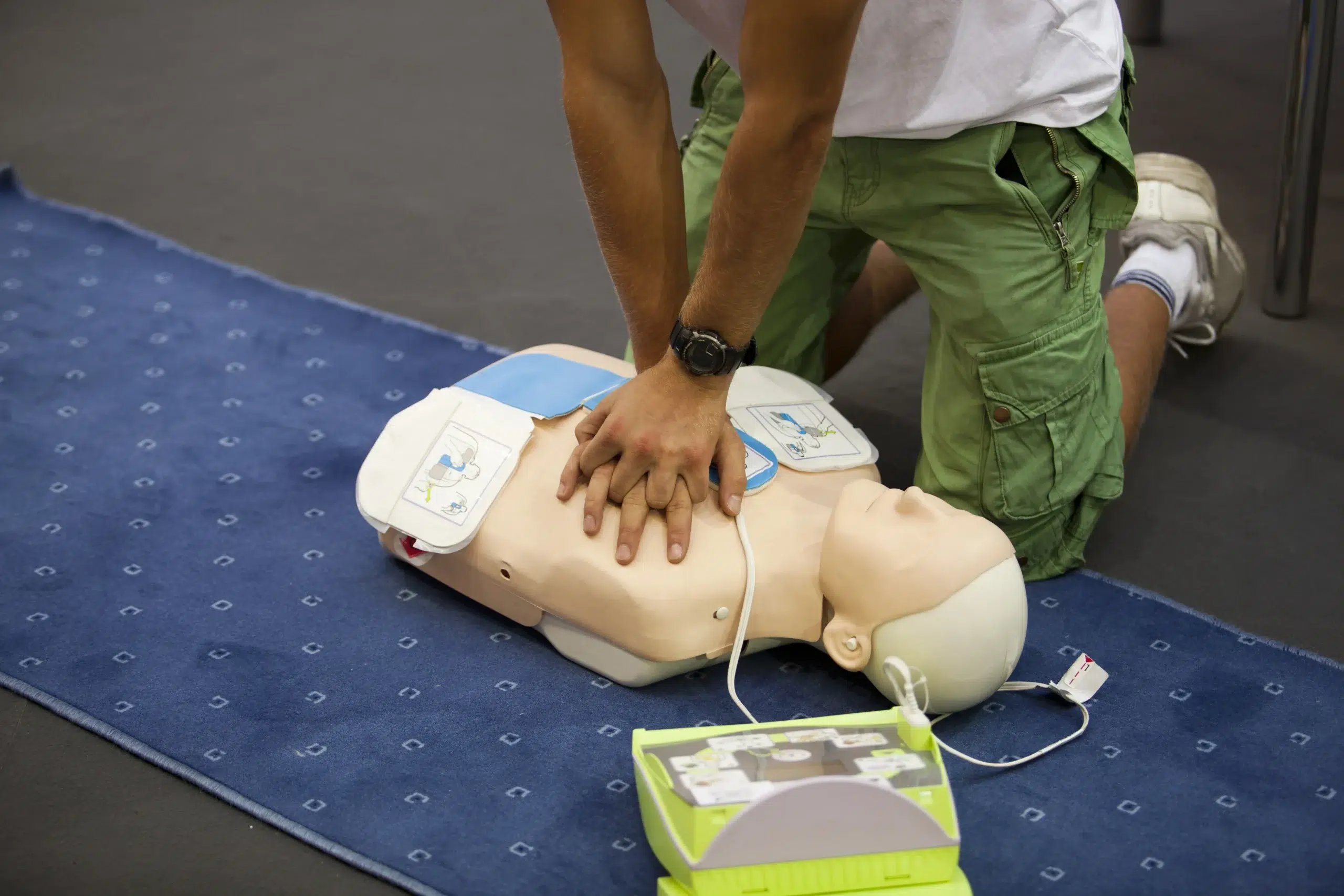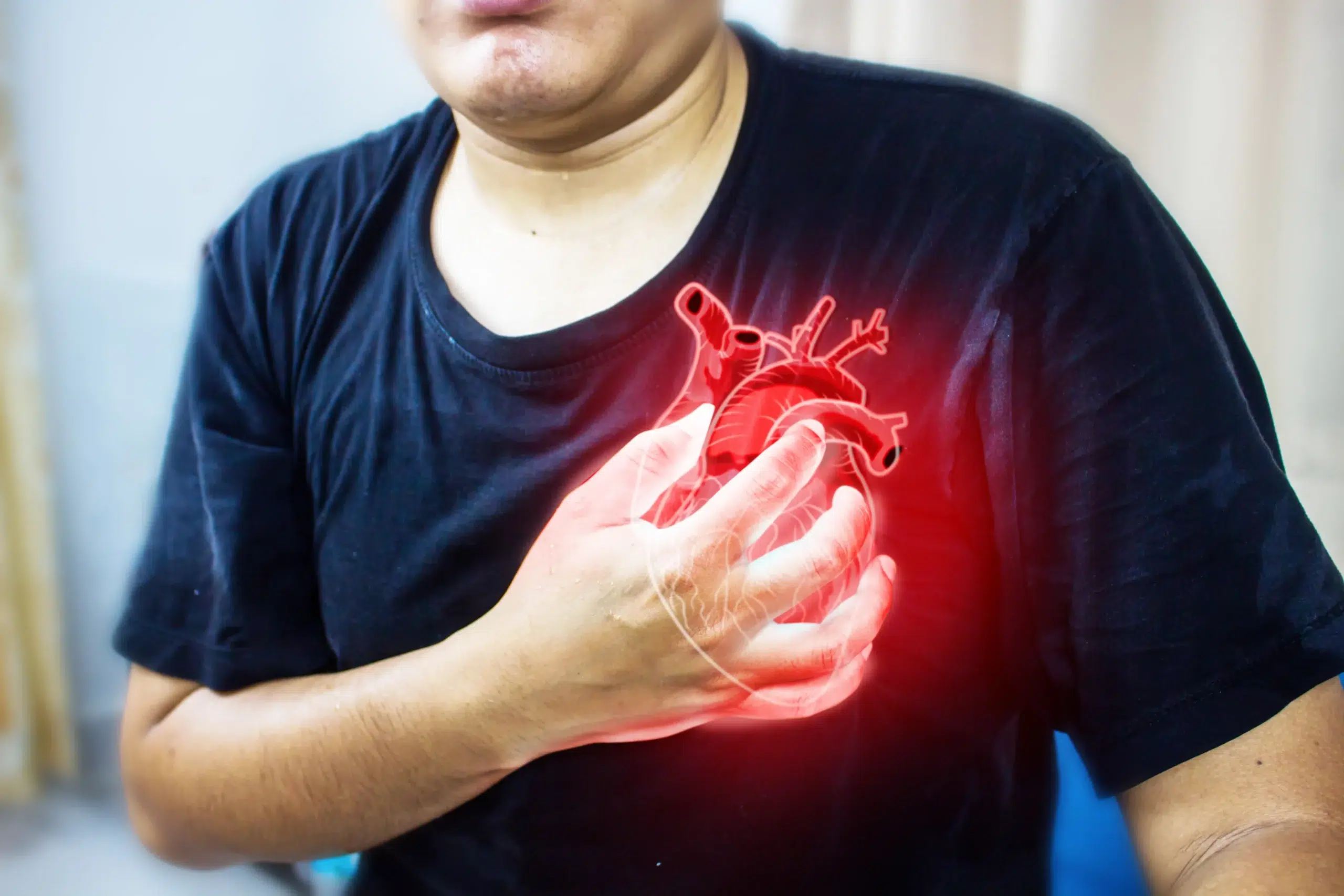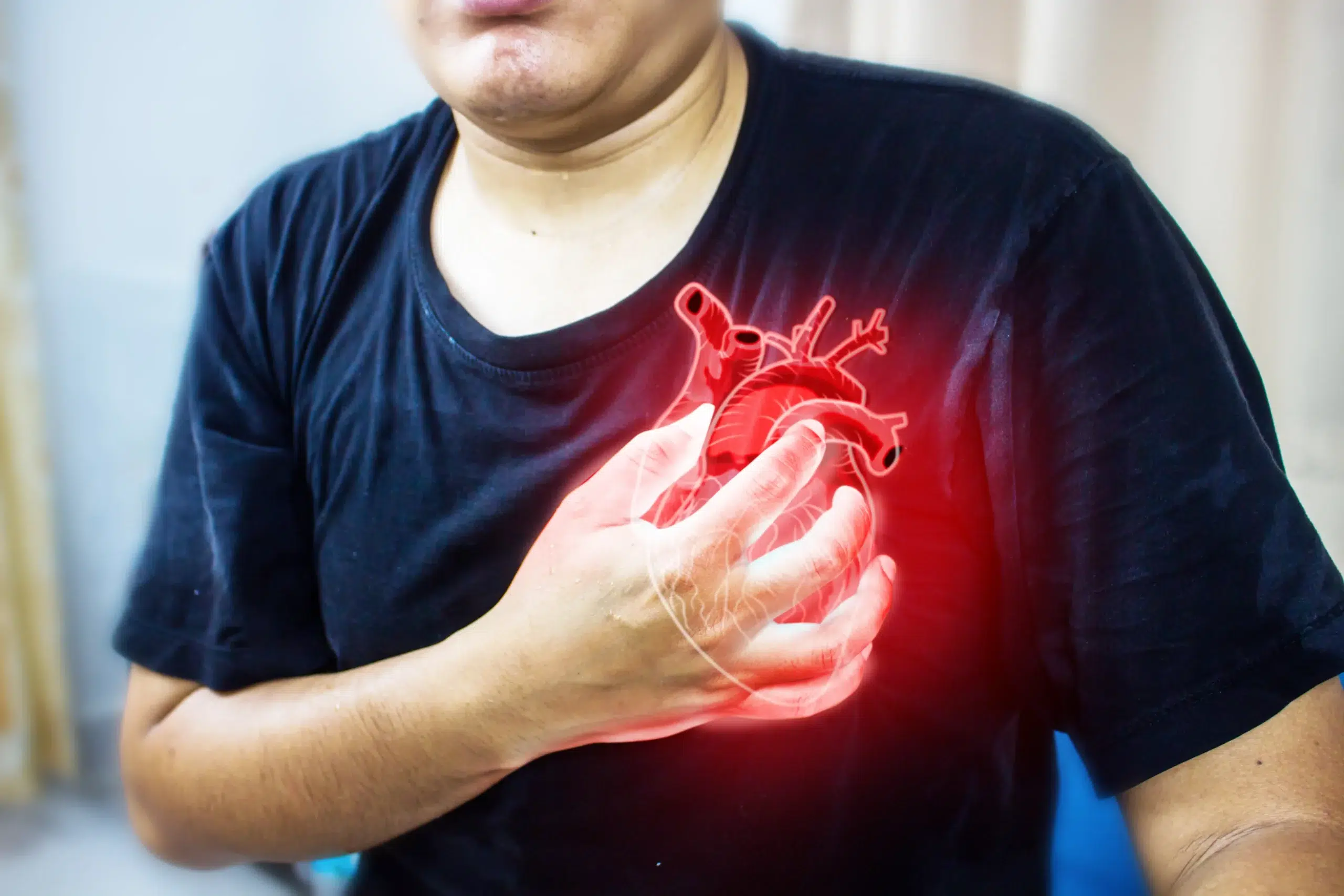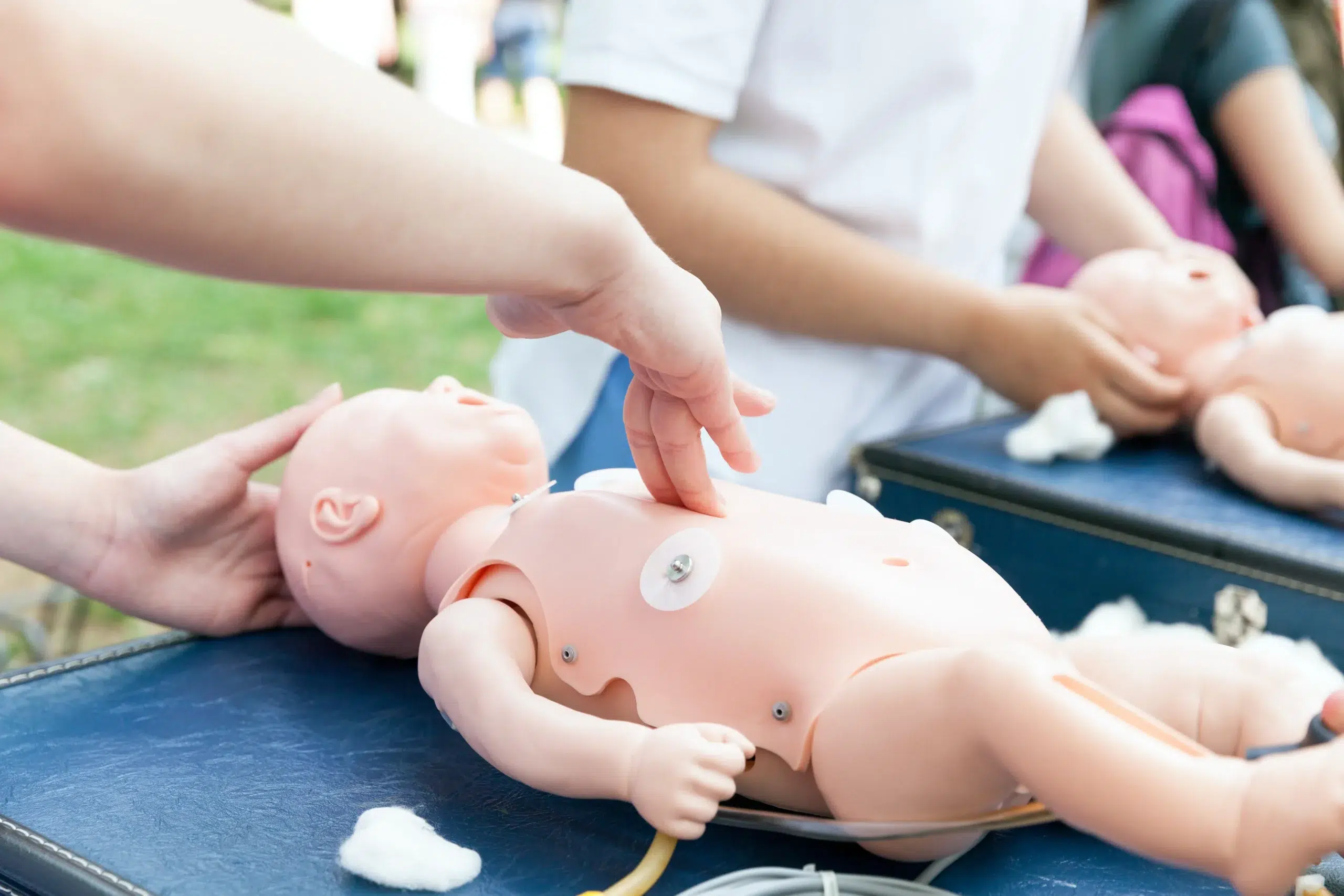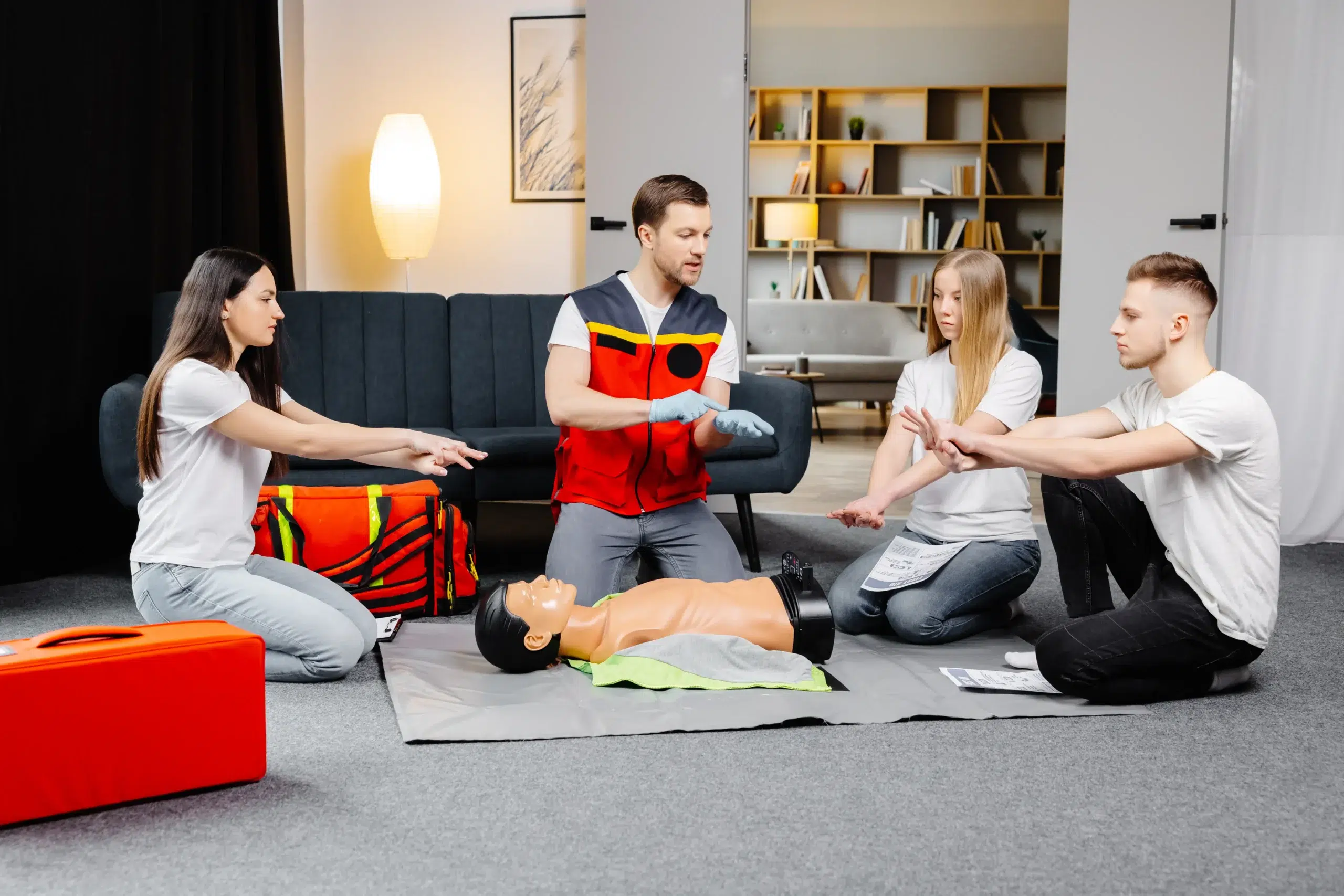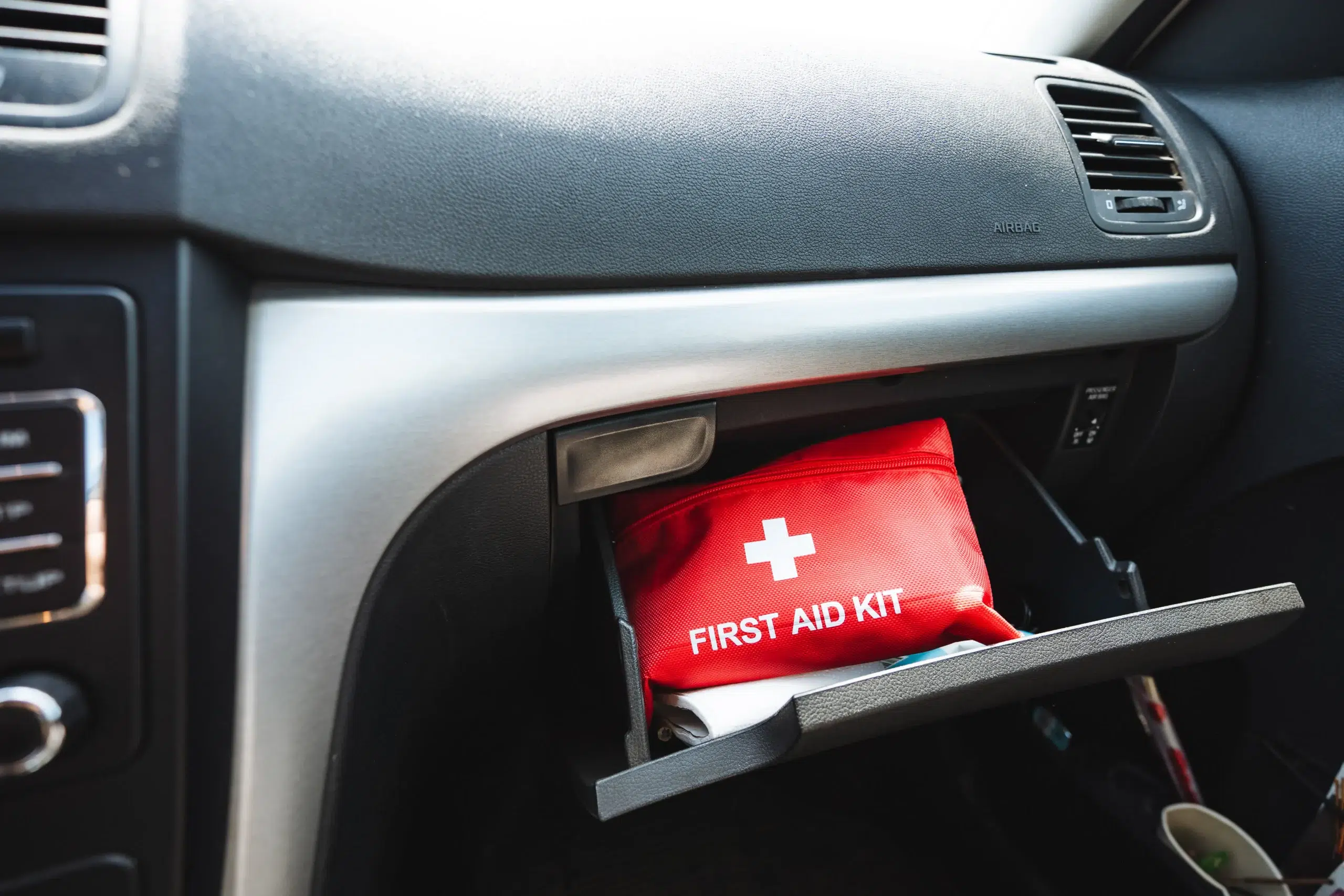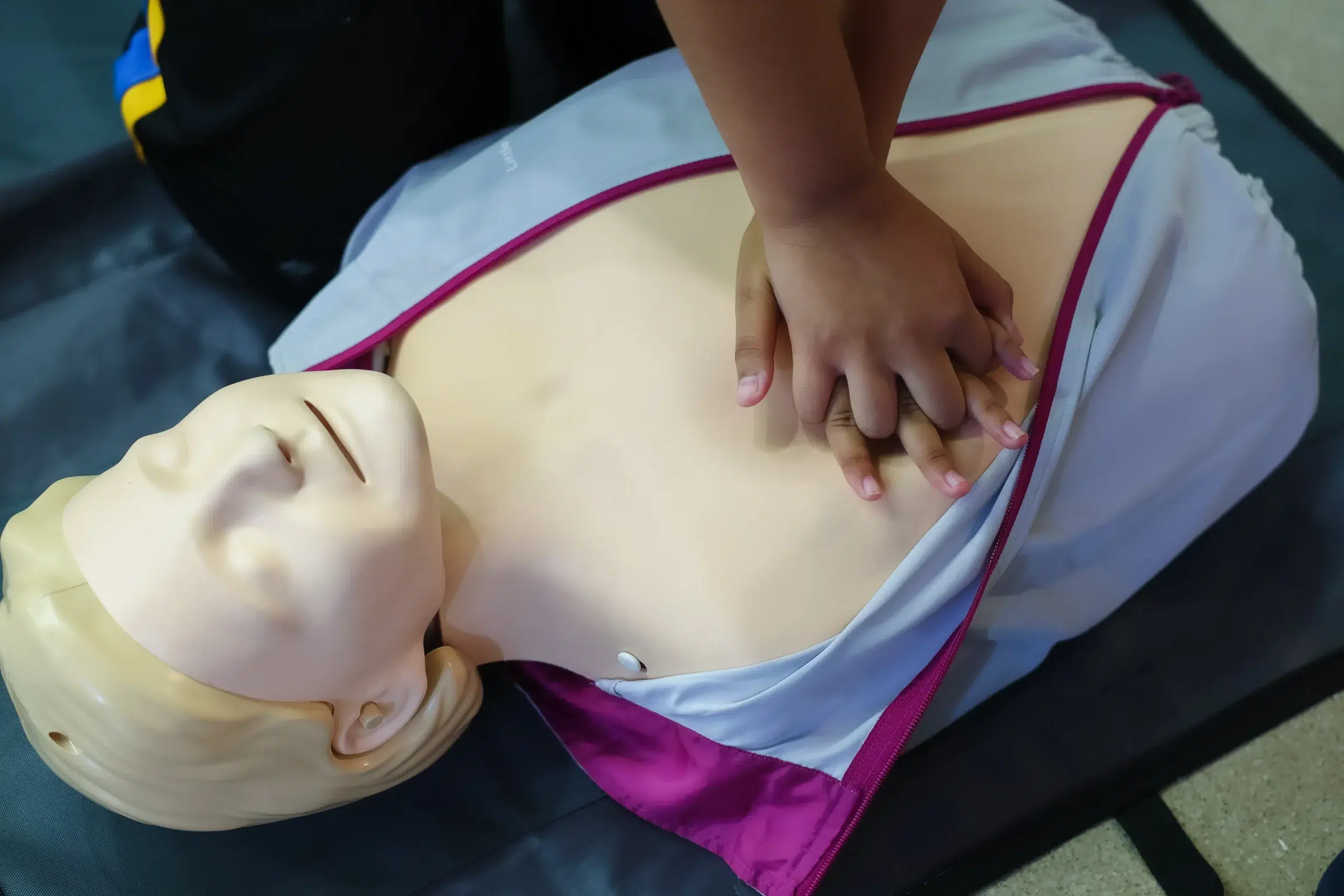First-aid knowledge isn’t just for doctors and nurses—it’s a valuable skill for everyone. Knowing how to respond to an injury or medical emergency can bring peace of mind and potentially save lives. This guide will demystify first-aid training, covering everything from basic first aid and CPR to specialized courses like ACLS and PALS. We’ll also delve into how to find “first-aid classes near me,” compare costs, and understand the different types of certifications available. Get ready to equip yourself with the confidence and skills to make a difference when it matters most.
Key Takeaways
- First aid empowers everyone: From minor scrapes to serious emergencies, first-aid training equips you to respond effectively. Find a course that aligns with your individual needs and goals, whether it’s basic first aid or specialized certifications.
- Choose your training wisely: Look for reputable providers affiliated with recognized organizations like the AHA. Consider instructor qualifications, student reviews, and course content when making your decision.
- Maintain your skills: First-aid certifications expire, typically within two years. Schedule recertification courses to keep your knowledge fresh and your skills sharp. Explore flexible options like the RQI program for convenient renewal.
What Are First-Aid Classes?
First-aid classes equip you with the skills to respond effectively to medical emergencies. These courses cover a range of topics, from treating minor injuries to managing life-threatening situations. Whether you’re a healthcare professional, a childcare provider, or simply someone who wants to be prepared, first-aid training can make a real difference.
CPR and AED Training
CPR (cardiopulmonary resuscitation) and AED (automated external defibrillator) training are often core components of first-aid classes. You’ll learn how to perform chest compressions, rescue breaths, and use an AED to help someone experiencing sudden cardiac arrest. CPR certification is essential for many healthcare professionals and can also be invaluable for anyone in a community setting. Roseville CPR Classes offers comprehensive CPR training through its affiliation with Safety Training Seminars, an AHA Training Center. They also offer group discounts to make training more accessible.
Basic First Aid
Basic first-aid courses teach you how to manage common injuries like cuts, burns, sprains, and fractures. You’ll learn essential skills such as how to control bleeding, clean and dress wounds, and immobilize injured limbs. These classes also cover how to recognize and respond to medical emergencies like allergic reactions, strokes, and seizures. Roseville CPR Classes offers a variety of first-aid courses to suit different needs and maintains a low price guarantee.
Specialized Courses
Beyond basic first-aid and CPR, there are specialized courses designed for specific professions or situations. For example, childcare providers in California may need to complete the EMSA Child Care Health and Safety course. Roseville CPR Classes offers this training, along with advanced certifications like ACLS (Advanced Cardiovascular Life Support) and PALS (Pediatric Advanced Life Support) for healthcare providers. They even offer the RQI program for healthcare professionals seeking efficient competency validation.
Find Reputable First-Aid Classes Near You
Finding the right first-aid class takes a little research, but it’s worth it to ensure you receive high-quality instruction. Here’s what to consider:
Check Certifications and Affiliations
Reputable first-aid training providers affiliate with recognized certifying organizations like the American Heart Association (AHA), the American Red Cross, or the National Safety Council. These organizations uphold rigorous training and certification standards. For instance, if you need BLS certification, confirm the provider offers AHA-certified courses. A clear affiliation demonstrates a commitment to quality and ensures your certification is widely accepted. Roseville CPR Classes’ affiliation with Safety Training Seminars, an AHA Training Center, guarantees high-quality instruction and certification.
Read Reviews and Testimonials
Before signing up for a class, check out what other students have to say. Online reviews and testimonials provide valuable perspectives on the quality of instruction, the classroom atmosphere, and the overall learning experience. Pay attention to comments about the instructor’s communication style, the hands-on practice opportunities, and the usefulness of the course materials. Honest feedback from previous students can help you understand what to expect.
Verify Instructor Qualifications
Instructors should possess significant experience and current certifications in their teaching areas. Don’t hesitate to inquire about an instructor’s background, qualifications, and experience level. Qualified instructors are knowledgeable, enthusiastic about first aid, and capable of answering your questions thoroughly. They also excel at fostering a comfortable and supportive learning environment for students with diverse backgrounds.
How Much Do First-Aid Classes Cost?
Knowing the cost of first-aid training is a practical first step. Let’s break down typical expenses and explore ways to save.
Average Price Ranges
First-aid course fees vary depending on several factors. The type of certification, course format (online, in-person, or blended), and the training provider all play a role. A basic first-aid class often costs between $40 and $60 per person. More comprehensive courses, such as those including CPR and AED training, typically cost around $80. For specialized certifications like Basic Life Support (BLS) or Advanced Cardiovascular Life Support (ACLS), expect to invest a bit more.
Potential Discounts and Free Options
Looking to save on training? Many providers offer discounts, especially for group registrations. Roseville CPR Classes offers group discounts, which is a smart way to train a team. Also, keep an eye out for free CPR/AED/First Aid courses sometimes offered by local fire departments or community organizations. These can be a fantastic option if you’re on a budget.
Group and Corporate Rates
If you’re coordinating training for a larger group or your company, explore group and corporate rates. Providers like Safety Training Seminars, affiliated with Roseville CPR Classes, often offer competitive pricing for businesses. This streamlined approach simplifies training logistics and ensures your team is prepared for emergencies. Roseville CPR Classes also has a low price guarantee. Contact providers directly to discuss your specific needs and explore tailored pricing.
Class Formats and Duration
Choosing the right first-aid class format depends on your learning style, schedule, and preferences. Let’s explore the most common options: in-person, online, and hybrid learning. Understanding the pros and cons of each will help you make an informed decision.
In-Person Training
In-person classes provide a hands-on, interactive learning experience. Led by qualified instructors, these sessions allow you to ask questions, practice skills in real-time, and receive immediate feedback. This format fosters a supportive learning environment where you can engage with instructors and fellow classmates. This direct interaction and opportunity for practice make in-person training an excellent option for many.
Online Courses
Online first-aid courses offer flexibility and convenience. You can learn at your own pace and fit the coursework around your busy schedule. This format is particularly helpful for those with limited access to in-person training locations. However, it’s essential to ensure the online course you choose meets any workplace requirements or local regulations. Not all online certifications are universally accepted.
Hybrid Options
Hybrid courses combine the best of both worlds, blending online learning with in-person skills sessions. Programs like the RQI program allow you to complete the theoretical coursework online at your convenience and then attend a hands-on session to practice your skills. This blended approach offers a balanced and effective way to learn first-aid techniques. Providers like Roseville CPR Classes and Safety Training Seminars offer these types of courses.
Typical Course Lengths
Most first-aid classes are around three hours long, although this can vary depending on the specific course content and format. This relatively short time commitment makes it feasible to fit first-aid training into most schedules. Remember that certifications typically expire every two years, so plan for recertification to maintain your credentials. Course fees vary based on the type of certification, format, and training provider. Check with your chosen provider for specific pricing.
Certifications and Their Validity
Knowing the ins and outs of first-aid certifications—what they cover and how long they’re good for—is key to picking the right class. This section breaks down the essentials, so you can confidently choose a course that fits your needs.
Types of Certifications Offered
First-aid certifications aren’t one-size-fits-all. Different courses cover different skill sets, from the basics of CPR to advanced life support. Common certifications you’ll come across include:
- CPR (Cardiopulmonary Resuscitation): This certification teaches you how to perform CPR on adults, children, and infants. You’ll learn chest compressions and rescue breaths, essential skills for responding to cardiac arrest. Our CPR certification course covers these fundamental techniques.
- BLS (Basic Life Support): BLS certification builds upon CPR, adding techniques like using an AED (Automated External Defibrillator) and relieving choking. It’s often a requirement for healthcare providers and other professionals. Roseville CPR Classes offers a comprehensive BLS course to meet these needs.
- ACLS (Advanced Cardiovascular Life Support): ACLS is a more advanced certification designed for healthcare professionals. It covers complex algorithms for managing cardiovascular emergencies, including stroke and heart attack. Learn more about our ACLS certification.
- PALS (Pediatric Advanced Life Support): Similar to ACLS, PALS focuses on the specific needs of infants and children in emergency situations. Our PALS course provides specialized training in pediatric advanced life support.
- First Aid: A general first-aid certification equips you to handle a range of common injuries and illnesses, from minor cuts and burns to more serious situations like fractures and allergic reactions. Explore our first-aid training options.
Roseville CPR Classes, in affiliation with Safety Training Seminars, an AHA Training Center, offers a range of these certifications, ensuring you receive high-quality training and recognized credentials.
Validity Periods
Certifications have an expiration date—typically two years—to ensure your knowledge and skills are up-to-date. This is important because guidelines and best practices in first aid and CPR can evolve, and renewing your certification keeps you current.
Recertification Requirements
To maintain your certification, you’ll need to take a recertification course before it expires. This usually involves a refresher course covering the latest guidelines and techniques. Recertification costs vary depending on the course and provider but typically range between $50 and $150. Many organizations, like Roseville CPR Classes, offer discounts and track student certifications to simplify recertification. We also offer an RQI program for healthcare professionals seeking a flexible recertification option. And, with our low price guarantee, you can be confident you’re getting the best value for your training. Consider joining our discount group classes to save on costs.
What to Expect in a First-Aid Class
Knowing what to expect can help you feel prepared and confident going into your first-aid training. Here’s a glimpse at what a typical class covers:
Course Content Overview
First-aid classes cover essential topics to equip you for various emergency situations. You’ll learn how to assess a scene for safety, recognize the signs and symptoms of common injuries and illnesses, and provide appropriate initial care. Specific topics often include:
- Injury Management: This includes handling bleeding, burns, fractures, sprains, and other common injuries. You’ll learn techniques for wound care, bandaging, and immobilization.
- Medical Emergencies: The course will cover how to respond to medical emergencies such as heart attacks, strokes, seizures, allergic reactions, and diabetic emergencies. You’ll learn to recognize the signs and provide basic life support until professional help arrives.
- Environmental Emergencies: This section addresses emergencies related to extreme temperatures (heatstroke and hypothermia), insect bites and stings, and poisoning.
- Choking and CPR: Many first-aid courses include training in CPR (cardiopulmonary resuscitation) and how to help someone who is choking. Roseville CPR Classes offers various CPR and first-aid courses to meet different needs, from basic to advanced certifications.
Hands-On Practice
Hands-on practice is a crucial part of any good first-aid class. You’ll practice techniques like bandaging, splinting, and CPR on mannequins and with classmates. This practical experience builds your confidence and helps you develop the muscle memory needed to respond effectively in a real emergency. High-quality CPR training, like the courses offered at Roseville CPR Classes, follows the latest American Heart Association guidelines.
Assessment Methods
First-aid courses typically involve some form of assessment to ensure you’ve grasped the material and can perform the necessary skills. This might include written tests, practical demonstrations, or a combination of both. The goal isn’t to make you feel stressed, but to confirm you’re ready to use your new skills confidently. Safety Training Seminars provides various CPR and first-aid courses in Roseville, from basic CPR to advanced certifications.
Choose the Right First-Aid Class
Finding the right first-aid class isn’t one-size-fits-all. It takes careful consideration of your needs, the available courses, and your time constraints. Let’s break down these factors to help you make the best choice.
Assess Your Needs
Before browsing courses, think about why you want first-aid training. Are you required to get certified for work, or are you building skills for your personal life? Understanding your motivation will guide your decision-making. Choosing the right training provider ensures you receive accurate and effective training in these life-saving techniques.
For example, healthcare providers may need advanced certifications like ACLS (Advanced Cardiovascular Life Support) or PALS (Pediatric Advanced Life Support). Someone who wants basic knowledge for their family might take a standard CPR and first-aid course. Childcare workers might need specialized training, like the EMSA Child Care Health & Safety program, to meet state requirements.
Compare Course Offerings
Once you know the type of training you need, research different course offerings. Look at organizations like Roseville CPR Classes, which offer various American Heart Association certifications. Compare the curriculum, certifications offered, and the overall course structure. See what aligns with your professional needs or personal goals. Roseville offers a range of CPR and first-aid courses, from basic to advanced certifications. Safety Training Seminars, an AHA Training Center affiliated with Roseville CPR Classes, offers various options, including CPR, BLS, ACLS, PALS, and First-Aid.
Contact training providers directly with any questions. A quick conversation can clarify uncertainties and help determine if a course is right for you. For example, healthcare professionals who need to renew their certification can ask about the RQI program offered by Roseville CPR Classes.
Consider Time Commitments
Finally, be realistic about your schedule. Courses vary in length, from a few hours for basic CPR to multiple days for advanced certifications. Consider in-person classes versus the flexibility of online learning. Also, factor in travel time and any pre-coursework. Balancing the course commitment with your other responsibilities will set you up for success. First-aid course fees and duration depend on the type of certification and format. If cost is a concern, see if the training center offers group discounts or a low-price guarantee like Roseville CPR Classes. Safety Training Seminars provides various courses in Roseville, from basic CPR to advanced certifications, so you can find one that fits your schedule and budget.
First-Aid Class Providers in Roseville, CA
Finding the right first-aid class often depends on your specific needs and location. Here are some reputable providers offering first-aid training in and around Roseville, CA:
Roseville CPR Classes
Roseville CPR Classes offers a range of courses, from basic first-aid and CPR to advanced certifications like BLS, ACLS, and PALS. They also offer discounts for group classes. Affiliated with Safety Training Seminars, an AHA Training Center, Roseville CPR Classes provides high-quality training that adheres to the latest American Heart Association guidelines. For more details on their offerings, visit their page on CPR courses in Roseville. They also offer the RQI program and have a low price guarantee.
American Red Cross
The Red Cross is a nationally recognized and trusted organization for life-saving training. They offer a variety of courses, including CPR, AED, and first aid. You can explore their course catalog and find a class near you.
National Safety Council
Safety Training Seminars, affiliated with the National Safety Council, provides a range of American Heart Association certifications. These include CPR, BLS, ACLS, PALS, and first aid. They offer various CPR and first-aid courses in Roseville, catering to different skill levels.
Health and Safety Institute (HSI)
NorCal Emergency Medical Training, partnered with HSI, is an AHA Certified Training Center. They offer various courses, including BLS, ACLS, PALS, NRP, and Community/Public CPR with Basic First Aid. For more information on first-aid training options in the area, see this helpful guide.
Local Community Colleges and Universities
Local community colleges often offer first-aid and CPR courses. Check with colleges in your area, such as Sierra College, for their course schedules and offerings. This guide may offer additional resources for finding local training.
Local Fire Departments
Many fire departments offer free or low-cost CPR, AED, and first-aid courses periodically as a community service. Contact your local fire department for information on upcoming training opportunities. You can also find information on free CPR and first-aid certification options through online communities like Reddit.
Debunking Common First-Aid Class Misconceptions
Let’s clear up a few common misconceptions about first-aid training. These myths can prevent people from learning potentially life-saving skills.
“First Aid is Only for Medical Professionals”
It’s easy to assume that first aid is best left to doctors and nurses. But first aid is for everyone. Knowing the basics can empower you to confidently handle emergencies, long before professional help arrives. Think of it as a practical skill set, not a medical profession. Everyday people, like parents, teachers, and office workers, can all benefit from first-aid training.
“You Don’t Need Training if You Have a First Aid Kit”
Having a well-stocked first-aid kit is definitely a great start. But simply owning a kit isn’t enough. Knowing how to use those bandages, antiseptics, and other supplies correctly is crucial. First-aid training teaches you how to assess injuries and apply the right treatment with the tools you have.
“First Aid is Just About CPR”
While CPR is a critical component of first aid, it’s not the whole picture. First-aid training covers a much broader range of skills, from treating minor cuts and burns to stabilizing fractures and recognizing the signs of a stroke. It equips you to handle a variety of medical situations, not just cardiac arrest.
“You Can Learn First Aid from Online Videos Alone”
Online videos can be helpful resources, offering a basic introduction to first-aid concepts. However, they can’t replace hands-on learning. In-person training allows you to practice techniques, ask questions, and receive feedback from certified instructors. This interactive experience builds confidence and prepares you to react effectively under pressure.
“First Aid is Only for Serious Injuries”
First aid isn’t just for major traumas. Knowing what to do for a minor burn, a sprained ankle, or even a nosebleed can prevent complications and reduce discomfort. These seemingly small incidents can benefit from prompt and proper first aid, making it a valuable skill for everyday life.
Related Articles
- First-Aid Training & Certification in Rocklin – Roseville CPR Classes
- CPR Certification in Roseville: Your Guide – Roseville CPR Classes
- CPR Training in Sacramento: Your Guide – Roseville CPR Classes
- CPR Courses in Roseville: Find the Right One for You – Roseville CPR Classes
- AHA Training in Roseville: Your Certification Guide – Roseville CPR Classes
Frequently Asked Questions
What’s the difference between CPR and first aid? CPR focuses specifically on life-saving techniques for someone whose heart has stopped or they aren’t breathing. First aid encompasses a broader range of skills for treating various injuries and illnesses, from minor cuts to more serious medical emergencies. CPR is often included as a core component within many first-aid courses.
How do I choose the right first-aid class for me? Consider your specific needs and goals. Are you getting certified for your job, or do you want basic skills for personal use? Think about your schedule and preferred learning style (in-person, online, or blended). Once you have a general idea, compare course offerings from different providers, looking at the curriculum, certifications, and overall structure.
How long are first-aid certifications valid, and how do I renew them? Most first-aid and CPR certifications are valid for two years. You’ll need to take a recertification course before it expires to stay current with the latest guidelines and techniques. Check with your certifying organization or training provider for specific recertification requirements and available courses.
What if I’m nervous about the hands-on practice in a first-aid class? It’s completely normal to feel a little apprehensive about the hands-on portions, but remember, these classes are designed to be supportive learning environments. Instructors understand that people come with different levels of experience and comfort. They’ll guide you through each skill step-by-step, offering encouragement and feedback. The practice is essential for building confidence and muscle memory, so embrace the opportunity to learn by doing.
Where can I find more information about first-aid training providers in my area? Start by searching online for “first-aid classes near me.” Look for providers affiliated with recognized organizations like the American Heart Association or the American Red Cross. Check out local community colleges, fire departments, and hospitals, as they often offer training courses. Reading online reviews and testimonials can also give you valuable insights into different providers and their courses.


